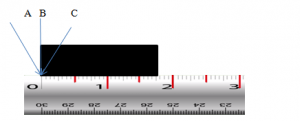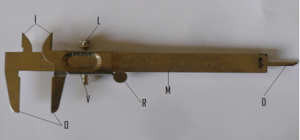Back to: PHYSICS SS1
Welcome to class!
In today’s class, we will be talking about position, distance and displacement. Enjoy the class!
Position, Distance and Displacement

Position
A position is a point in space, is determined by its distance and direction from other points. The statement of position is accomplished by means of a frame of reference or a point of reference, which is called the Origin. Position is a location of a point using rectangular coordinates, x and y axes. When writing the coordinates of points, x is written first followed by y.
Distance
Distance is the product of average speed and time.
Distance = average speed x time
Distance is also defined as the length of space covered by an object when it changes position from one point to another. Note that the direction is not specified hence distance is a scalar quantity. The S.I unit is metre (m).
Measurement of distance
Instruments commonly used to measure distance are:
- Tape/Ruler measure
- Vernier callipers
- Micrometre screw gauge
Using tape measure and ruler:
The zero mark of the ruler or tape is placed on the desired initial mark of the object to be measured. In some ruler, the zero mark is the beginning of the ruler itself while other rulers have the zero mark somewhere beyond the edge, the disadvantage of the former is that edge can be worn and the ruler will give false readings especially when it is not calibrated into other smaller fractions to use this ruler is safe to measure starting one then subtract it from the answer
Diagram

The ruler above reads 6.5 units, that is the length of an object
To read correctly a ruler one must read at the correct position to avoid parallax error

The correct position to read the ruler is at point B, this avoids parallax error. Parallax error occurs when a point on an object is viewed from the remaining two positions, A and B.
Vernier calliper:

A vernier calliper measures the distance to the accuracy of 0.01cm.
Micrometre screw gauge:
Micrometre screw gauge is used to measure a length to the accuracy of 0.01mm(0.001cm).
When the thimble makes one complete revolution the spindle moves in or out 0.5mm for 50 divisions of thimble or 1mm for 100 divisions of a thimble, therefore 0.5mm/50=0.01mm and 1mm/100=0.01mm

Displacement
Displacement is the distanc3e travelled in a constant direction.
Displacement average velocity x time
Displacement is also defined as the distance a body moves in a specified direction. It is, therefore, a vector quantity.
Speed
Speed is defined as the time rate of change of distance moved. Speed applies to a body that is not moving in a straight line. A body moving in a straight line has a fixed or specified direction but speed is a scalar it has no direction. The S.I unit of speed is m/s other commonly used unit is km/hr or cm/sec.
Uniform speed:
When a body covers equal distance in equal time intervals, no matter how small the time interval may be, the speed is said to be a uniform speed or constant speed.
Non-uniform speed:
If the speed of the body keeps changing throughout the body is said to be moving at a non-uniform speed. The average speed of the body= total distance travelled/total time taken to travel the distance.
Velocity
Velocity is defined as the time rate of change of distance in a specified direction. The velocity applies to a body moving along a straight line. Distance is a specified direction is often called displacement.
Velocity is a vector quantity. It has the same unit as speed.
Uniform velocity:
When a body covers equal displacement in equal time intervals, no matter how small the time interval may be, the velocity is said to be a uniform velocity or constant velocity. Its S.I unit is metre per second (m/s).
Non-uniform velocity:
If a body travels unequal distance at equal intervals of time in a straight line the body is said to be moving at a non-uniform velocity. The average velocity = total displacement/total time taken.
In our next class, we will be talking about Rectilinear Acceleration. We hope you enjoyed the class.
Should you have any further question, feel free to ask in the comment section below and trust us to respond as soon as possible.

good
Please I also want to learn the vernier calliper and micrometer screw gauge readings